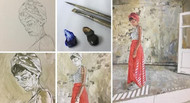Artist Interview: Greg Mason, Professional Oil Painting Ambassador for Cass Art
Posted by Cass Art on 24th Jan 2018
Greg Mason’s oil paintings are a true celebration of the medium. His work has a vibrancy and painterly quality that sees faceted colours and brush marks dance across the surface of the canvas. A harmonious colour palette reveals subtle tonal changes, modelling the forms of figures, nudes and landscapes within a balanced composition that is both contemporary and deeply rooted in the traditions of figurative art.
Based in Devon, Greg graduated from St Martin’s School of Art in London and is a South West Academician. He was a semi-finalist on last year’s Sky Arts Portrait Artist of the Year series and is a regular finalist in the Royal Institute of Oil Painters and Royal Portrait Society competitions.
Cass Art are delighted to announce Greg Mason as our new Professional Ambassador with a focus on everything oils! Look out for updates on Cass Art’s social media where you can see Greg’s work in progress.
Gain tips, insights and techniques as he visits our Flagship store in London to teach a range of workshops this year. You can also see Greg’s work in a solo show at the Art Space in Islington just after Easter.
We caught up with Greg in his Devon studio to find out all about his work and why he loves working in oils so much…
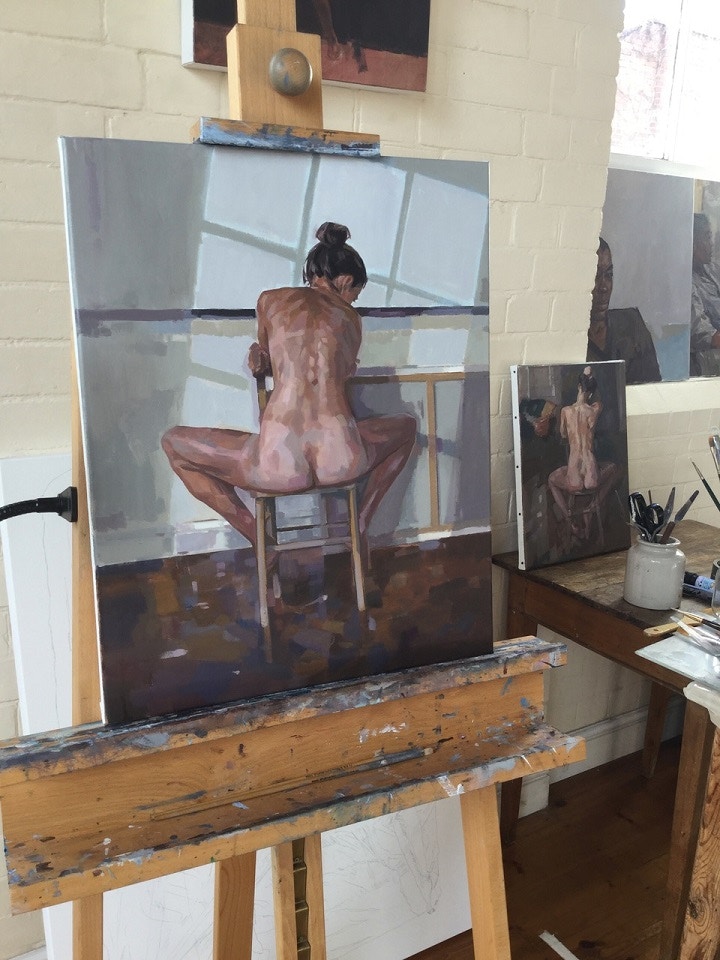
Tell us a bit about your background and how you became an artist.
The other day I was looking through an old scrapbook my mother had kept from my childhood and realised I’d been getting art prizes from an early age. You just don’t register it as a kid, you’re too busy hanging out with your mates or immersed in the process of growing up to notice, but it made me realise that there were already some people around me who had spotted my potential as an artist and wanted to encourage that in me.
School and me were not a perfect fit however – and to be honest, I found art a kind of refuge, a place where I could go and just be me. I hated reading and had a terrible memory for facts but managed to pass my exams by turning everything into pictures in my head.
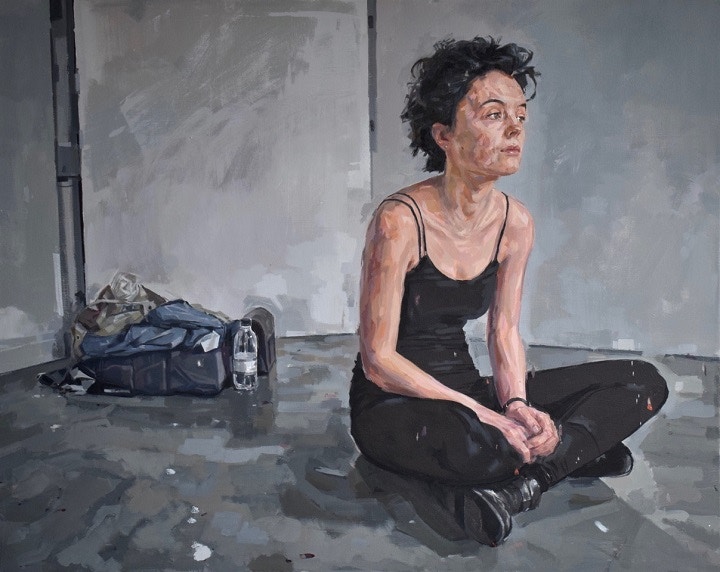
St Martin’s School of Art in the early 80s was wonderful – right in the heart of Covent Garden – and we had the best tutors, young, opinionated, political and fresh from the Royal College of Art. I studied illustration and spent the next 5 years or so working in London for magazines like New Scientist, The Listener and the Times Educational Supplement. I’d have 24 hours to make an illustration before sending it off on a motorbike to hit the deadline.
In the late 80s I bought a computer – one of the first Macs to be used commercially in the UK and almost overnight I became an art director working for some of the UK’s top fashion clients – travelling the world with Vidal Sassoon, Aveda and Schwarzkopf Professional until I sold my company about 8 years ago to focus on painting.
Painting was always there in the background and now it’s centre stage. I love what I do and I love helping others realise their own potential as artists filtering, reflecting and commenting on the world around them. I definitely think that artists have a unique place in society to notice and highlight the things that others don’t see.

How do you decide on your subject matter?
The short answer is that some of it is intuitive and some is more conceived. When I started painting eight years ago, I worked with one model for an entire year, she would come to my studio and pose for the day and I would paint her. We made about 12 paintings that year and I learned a vast amount about the rhythm of painting and the process of thinking about what I was doing. As in most creative professions, the majority of the battle goes on in your own head and learning to ask yourself the right questions and come up with useful answers is what lays the platform for the possibility of good outcomes.
When I work with a live model, the ‘subject’ is them, but the pose can be something that happens intuitively ‘in the moment’. It’s usually when a model is not aware of posing that they reveal something that appeals to me, something different and unique that makes me want to paint. I might start with an idea, but if I stay present to the possibilities of the collaboration then this often results something deeper and more authentic.
An example of this would be when I painted Trevor Eve on the Sky Arts show. There was a moment when all the artists revealed their paintings to him, he was obviously quite taken aback by mine as they had to ‘bleep’ out his response. I’d picked up on something a little bit darker and moody about his personality and I’d managed to catch this in the painting. It took him a moment to come round to see what I’d seen, but thankfully both he and the judges picked it as the winner.
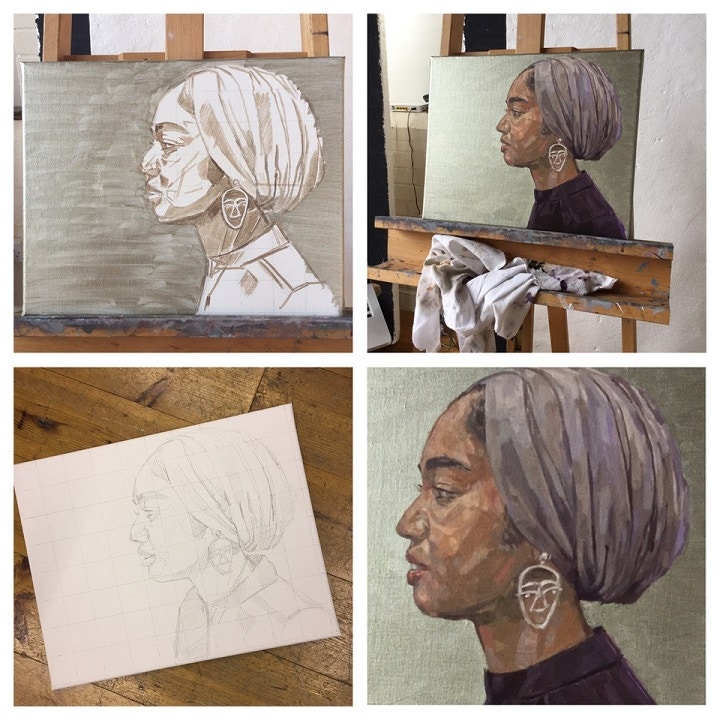
Can you take us through your process from blank canvas to finished piece?
Starting with a blank canvas can be quite daunting for some and making good choices up front in the life of a painting will set the groundwork for building something that has the possibility of working. The first question I ask myself is ‘where is the energy in the work and how can I hold this energy in the painting’. I take a while to establish a composition that will achieve this which involves consideration of both the canvas shape and the pose. A simple pencil sketch lays down the drawing and an under-painting follows in either grey or raw umber. For speed, I might use acrylic in the under-painting if I intend to go straight into a colour oil layer, otherwise I’ll use oil paint thinned with Liquin and come back to it the next day. What follows is an undefined timeline of oil layers where I work to a point where I feel the painting is complete.
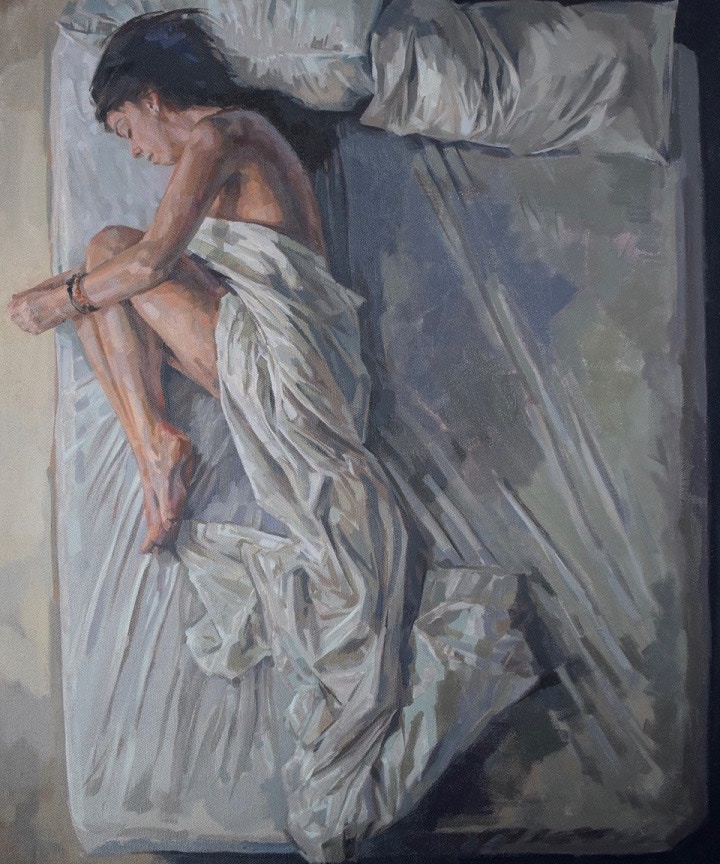
You like to paint both landscapes and portraits, how do you approach these differently?
Whether I’m painting people or places I still have to find my ‘way in’ to the work and this usually involves being immersed in the subject and responding authentically to the energy of that moment. I’ve already talked a bit about people, and with landscapes it’s a little different in as much as the energy is either in a sky, or a space, or a wind, or a moment of light hitting something. In fact, my landscapes are more about a series of moments where, instead of resting on a single focal point, you follow the journey of paint across the canvas. That’s probably why I don’t paint houses in my landscapes… I just don’t like interruptions.
What do you prefer about working with oils over other mediums?
Once you accept the limitations of working in oil, you are opened up to world of endless possibilities. That might sound like a contradiction in terms, but if you think of it as a musician sitting down to play the piano, you have to respect the limitations of the instrument in front of you, and once you have, there is so much you can play. So the simple answer is that I like to play oils because the colour is richer, the tone is broader and the music is full of emotion, but that doesn’t stop me picking up a different instrument from time to time.
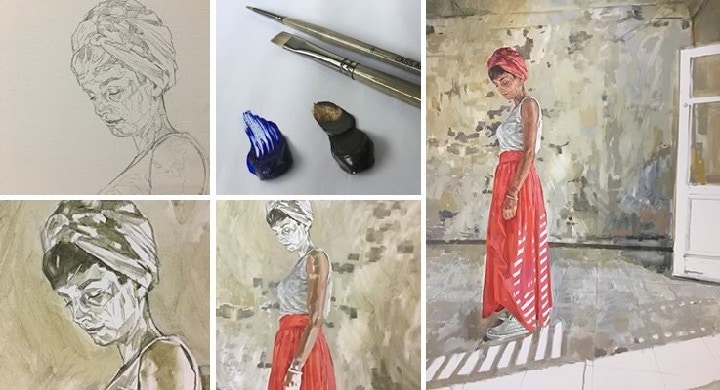
Can you talk us through your colour palette?
When I started painting, I sat down with a catalogue and just picked all the colours I liked the look of. The result was a large collection of expensive tubes of paint, half of which I’ve never used. Over time, I learned that mixing from a limited palette would give me all the colours I’d need (with a few exceptions), so I work with a core of 8: Titanium White, Cadmium Yellow, Yellow Ochre, Cadmium Red, Alizarin Crimzon, Raw Umber, Ultramarine Blue and Black.
Some of the greatest painters in the world have some of the most limited palettes. If you can, take the opportunity to watch how they make colour choices, how they mix, what mediums they use and what brushes they prefer. Painting workshops are a great way of doing this, they put you right in the front row with an expert who can show you how it’s done and support you through the process of trying it out for yourself.
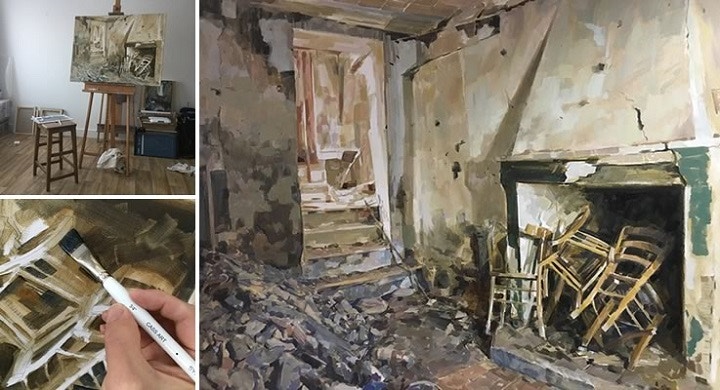
What are you working on at the moment?
I do have a couple of portrait commissions on the go, but the main body of my work at the moment is focussed on the community of a little town in Italy called Farindola. Last summer I was invited to do a residency in this mountain village where there had been a tragic accident earlier in the year. In January, a violent earthquake triggered an avalanche that completely destroyed Rigopiano Hotel, killing 30 people and impacting the lives of this tight-knit community. My job was to make work that responded to this and the way in which the town was trying to rebuild itself.
My studio for a month was a beautiful old town house that withstood the earthquake, but bore the scars with cracked walls and water damaged ceilings. Here, I painted a series of portraits of those who had lost loved-ones, brothers, daughters, cousins, etc. It was an incredible privilege to be invited into the lives of these people and see how they were still working out how to move on in the light of what had happened.
Back in my Devon studio, I continue to develop these works as I reflect on their experiences and the friendships we made, staying in touch with my sitters via Instagram as I post up images of their developing portraits.
The full body of work will be on show at the Cass Art Islington Flagship Store just after Easter.
Find out more…
See more of Greg’s work at www.gregorymason.com
Find Greg on Instagram @gregorymason_art, on Twitter @gregorymasonart and on Facebook @gregorymasonpaintings

